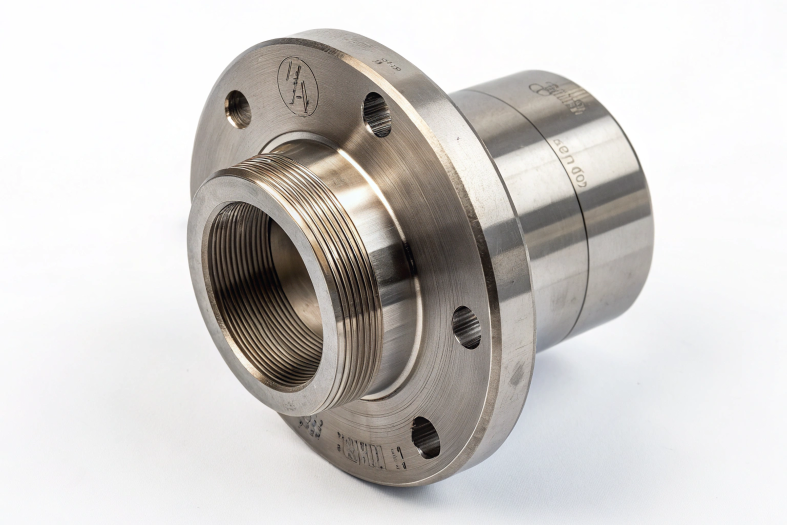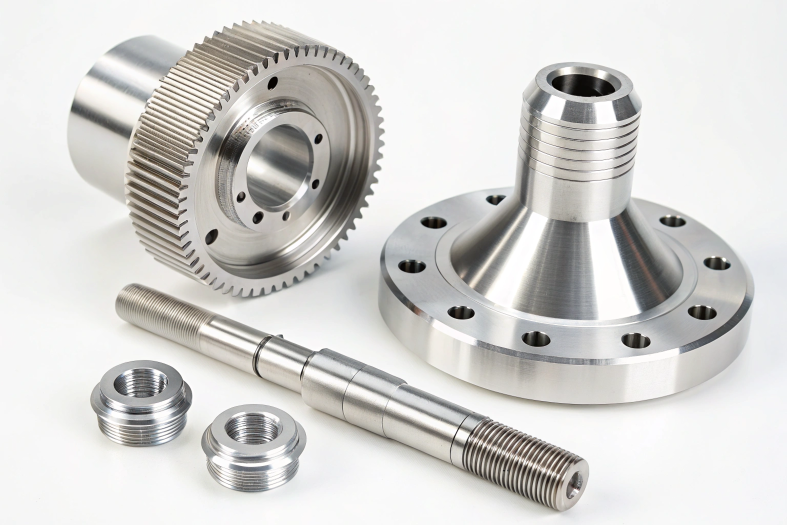When it comes to mass production, selecting the right CNC machine is crucial. If you choose the wrong one, it could slow down your operations, increase costs, or compromise product quality—nobody wants that headache! The good news is that understanding which CNC machine fits your needs can save you time and money while ensuring top-notch efficiency.
Direct Answer:
Mass production in CNC machining utilizes CNC Lathes, Milling Machines, Turning Centers, Grinding Machines, and Machining Centers, selected based on product requirements, cost efficiency, and scalability.

What is Mass Production in CNC Machining?
Mass production refers to the large-scale manufacturing of standardized products. It is characterized by processes that focus on high volume, standardization, and efficiency. The goal of mass production is to create identical parts or components quickly and cost-effectively, while maintaining consistent quality.
Characteristics of Mass Production:
- High Volume: Producing large quantities of the same part.
- Standardization: Ensuring uniformity across all units.
- Efficiency-Focused: Streamlining processes to reduce costs and time.
Key Criteria for Choosing a CNC Machine for Mass Production
When selecting a CNC machine for mass production, consider the following factors:
- Speed and Efficiency: Machines must operate at high speeds to meet production quotas.
- Precision and Repeatability: Consistency in output is critical to avoid defects.
- Cost-Effectiveness: Balancing machine cost with production efficiency.
- Material Compatibility: Ensuring the machine can handle the required materials.
- Automation Capabilities: Supporting automated operations for increased productivity.
Types of CNC Machines Suitable for Mass Production
CNC Lathe
- Best for: Manufacturing cylindrical and symmetrical parts.
- Features:
- High-speed operation ensures rapid production.
- Exceptional repeatability for producing identical parts.
- Examples:
- Automotive components like shafts and axles.
- Fasteners such as bolts and screws.
CNC Milling Machine
- Best for: Creating complex 3D shapes with high precision.
- Features:
- Multi-axis machining for intricate geometries.
- Versatile tool options for various applications.
- Examples:
- Mold production for plastics or metals.
- Aerospace components requiring intricate details.
CNC Turning Centers
- Best for: Achieving high precision with advanced automation.
- Features:
- Combines milling and turning in one machine.
- Supports tool-changing capabilities to handle diverse operations.
- Examples:
- Large industrial components like flanges or turbine parts.
CNC Grinding Machine
- Best for: Achieving high surface finishes and tight tolerances.
- Features:
- Perfect for post-processing operations.
- Produces smooth finishes for critical parts.
- Examples:
- Medical equipment requiring extreme precision.
- Aerospace components with stringent surface requirements.
CNC Machining Centers
- Best for: Manufacturing parts with complex and diverse geometries.
- Features:
- High-speed spindles for rapid machining.
- Multi-tasking capabilities, including drilling, milling, and tapping.
- Examples:
- Electronics parts with intricate designs.
- Precision tooling for various industries.
Why Automation Matters in Mass Production
Automation plays a vital role in mass production. CNC machines equipped with robotic arms, automatic tool changers, and smart sensors drastically improve efficiency.
Benefits of Automation:
- Reduced Human Error: Minimizes mistakes during manufacturing.
- Increased Output: Ensures consistent, high-volume production.
- Improved Uptime: Machines can operate continuously with minimal downtime.

Advanced Technologies Enhancing CNC Mass Production
Modern CNC systems are increasingly integrating advanced technologies to improve efficiency and product quality. Here are some notable innovations:
Smart CNC Machines
- Features:
- Integration with IoT (Internet of Things) for real-time monitoring.
- Predictive maintenance to reduce downtime.
- Benefits:
- Improved machine reliability.
- Enhanced data-driven decision-making.
Multi-Axis CNC Machines
- Features:
- 5-axis or 7-axis machines allow machining of complex geometries in one setup.
- Increased versatility and reduced part handling.
- Benefits:
- Faster cycle times and reduced errors.
- Ideal for aerospace, automotive, and medical industries.
High-Speed Machining (HSM)
- Features:
- High spindle speeds and rapid feed rates.
- Reduced heat generation and tool wear.
- Benefits:
- Shorter production cycles.
- Enhanced surface finish quality.
Cost Optimization in Mass Production with CNC Machines
Mass production requires significant investment in equipment, materials, and labor. Here are strategies to optimize costs:
- Tooling Optimization: Using durable, high-performance tools reduces replacement frequency.
- Batch Production Planning: Grouping similar parts reduces setup times and improves efficiency.
- Material Utilization: Optimize material selection to minimize waste while ensuring quality.
- Energy Efficiency: Choose energy-efficient machines to lower operational costs.
How to Choose the Right CNC Machine Supplier
Selecting the right supplier is crucial for ensuring successful mass production. Here’s what to look for:
-
Experience and Expertise:
- Choose suppliers with proven track records in mass production.
- Prioritize those with extensive industry knowledge and a history of delivering high-quality equipment.
-
Technical Support:
- Ensure the supplier offers comprehensive after-sales support.
- Availability of training and troubleshooting services.
-
Customization Options:
- Ability to tailor machines to specific production requirements.
- Flexible solutions for automation and integration.
-
Delivery and Scalability:
- Timely delivery of equipment and spare parts.
- Capability to scale up production as your business grows.

Conclusion
Mass production is at the heart of today’s manufacturing world, and CNC machines are like the secret weapon—fast, precise, and incredibly efficient. The trick is finding the right machine that fits your production needs perfectly. Throw in some of the latest tech and automation, and you’ll be amazed at how much smoother (and cheaper!) things can get.
Thinking about diving into CNC machining for mass production? Let’s chat! Reach out, and I’d be happy to share more tips or help you explore the best options to take your production game to the next level. Let’s make it happen!
FAQ:
Can CNC be used for mass production?
Yes, CNC machines are highly suitable for mass production. They offer precision, repeatability, and efficiency, making them ideal for manufacturing large volumes of standardized parts. With automation and advanced programming, CNC machines can operate continuously with minimal human intervention.
What type of cutting tool is used in mass production?
In mass production, cutting tools such as end mills, drill bits, lathe inserts, and grinding wheels are commonly used, depending on the CNC machine type and material being processed. High-performance tools with coatings like carbide or ceramic are preferred for durability and efficiency.
What are the 5 common types of CNC machines?
The five common types of CNC machines are:
- CNC Lathes – Best for cylindrical parts.
- CNC Milling Machines – Ideal for complex 3D geometries.
- CNC Turning Centers – Combines milling and turning capabilities.
- CNC Grinding Machines – Used for high-precision finishing.
- CNC Machining Centers – Versatile machines for diverse part geometries.
Is CNC good for batch production?
Yes, CNC machines are excellent for batch production. They allow for quick setup changes, consistent part quality, and the ability to efficiently produce multiple identical parts in a single run, making them ideal for small to medium-sized batches.


